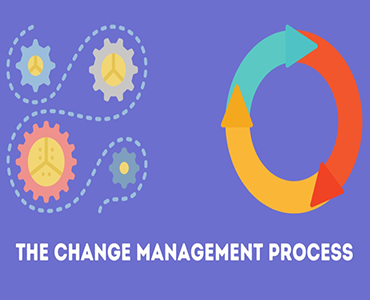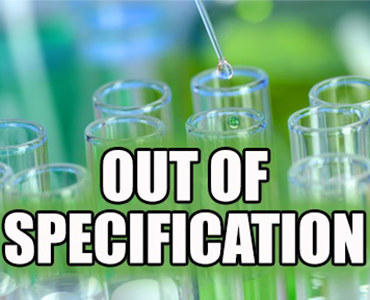
43/A, 1st Main Road,
3rd Stage, 3rd Block, Basaveshwaranagar,
Bengaluru- 560079,
Karnataka, India.

Deviation Management is an essential process within Quality Management Systems (QMS), particularly in regulated industries such as pharmaceuticals, biotechnology, medical devices, and manufacturing. The ability to quickly identify, investigate, and resolve deviations ensures that companies maintain product quality, adhere to regulatory standards, and safeguard operational integrity.
Deviation Management is an essential process within Quality Management Systems (QMS), particularly in regulated industries such as pharmaceuticals, biotechnology, medical devices, and manufacturing. The ability to quickly identify, investigate, and resolve deviations ensures that companies maintain product quality, adhere to regulatory standards, and safeguard operational integrity.
Components of Deviation Management:
• Identification of Deviation is the first critical step in Deviation Management, where any departure from established procedures, specifications, or standards is recognized. Prompt and accurate identification of deviations ensures that the issue is addressed in a timely manner to maintain product quality, regulatory compliance, and operational efficiency.
• Root Cause Analysis (RCA) Preparation Once a deviation is identified, it is essential to start planning for the investigation phase, where root cause analysis (RCA) is conducted. For proper root cause identification, the deviation must be clearly defined, ensuring that all team members understand the issue thoroughly and can collaborate on a resolution.
• Deviations in Compliance with Regulatory Requirements Regulatory Non-Compliance: Deviations may also arise when processes or systems fail to meet the standards set by regulatory bodies such as the FDA, EMA, or ISO. In such cases, non-compliance with established regulations (such as Good Manufacturing Practices (GMP), Good Laboratory Practices (GLP), or Good Clinical Practices (GCP)) must be immediately identified to avoid potential risks, product recalls, or legal penalties.
• Risk assessment is a systematic process used to identify, evaluate, and prioritize potential risks that could negatively impact an organization’s operations, product quality, or regulatory compliance. In regulated industries such as pharmaceuticals, medical devices, biotechnology, and manufacturing, risk assessment is a key component of the Quality Management System (QMS) and helps organizations maintain the safety and efficacy of their products, as well as meet regulatory standards.
• CAPA stands for Corrective and Preventive Action, a crucial process in Quality Management Systems (QMS) designed to address issues, improve processes, and prevent future problems in regulated industries such as pharmaceuticals, medical devices, manufacturing, and biotechnology. The goal of CAPA is to identify, investigate, and correct deviations or non-conformances while taking proactive measures to prevent recurrence, ensuring continuous improvement and compliance with regulatory requirements.
• Documentation and Reporting are critical components of the Corrective and Preventive Action (CAPA) process, ensuring that all actions taken are thoroughly recorded, tracked, and communicated within an organization. Effective documentation and reporting not only ensure regulatory compliance but also provide transparency, traceability, and accountability in the CAPA process.

Change Management is a critical process for any organization, particularly in dynamic industries like life sciences, healthcare, and technology. It involves the structured approach to transitioning individuals, teams, and organizations from a current state to a desired future state. Effective change management ensures that changes are implemented smoothly, risks are minimized, and the organization adapts without disrupting operations.
Change Management is a critical process for any organization, particularly in dynamic industries like life sciences, healthcare, and technology. It involves the structured approach to transitioning individuals, teams, and organizations from a current state to a desired future state. Effective change management ensures that changes are implemented smoothly, risks are minimized, and the organization adapts without disrupting operations.
1. Minimizing Resistance to Change
People are often resistant to change due to fear of the unknown, uncertainty, or a perceived threat to their role or job security. Change management helps address these concerns by communicating the reasons for change, the benefits it will bring, and how it will be implemented.
By engaging employees early and involving them in the process, organizations can reduce resistance and increase buy-in, leading to smoother transitions.
2. Ensuring Successful Implementation of Change
Change initiatives, whether they involve new technology, processes, or organizational structures, often fail without proper management. Change management creates a structured approach for planning, executing, and monitoring the change, ensuring that objectives are met and disruptions are minimized.
With a clear strategy in place, organizations are more likely to see successful outcomes from their change initiatives.
3. Aligning Change with Organizational Goals
Every change initiative should align with the strategic objectives of the organization. Change management ensures that the transition is not just about the tactical implementation of new systems or processes, but that it also supports the broader mission, vision, and goals of the organization.
By aligning change with organizational goals, leaders ensure that change contributes positively to the company’s long-term success.
4. Reducing the Impact of Disruption
Change can cause temporary disruptions in daily operations, leading to decreased productivity or morale. A well-executed change management plan can help identify potential risks early and implement measures to mitigate disruptions.
By providing adequate training, support, and resources, organizations can reduce the likelihood of downtime and other operational issues during transitions.
5. Fostering a Culture of Continuous Improvement
Change management helps organizations become more agile, encouraging a culture that is open to continuous improvement. When changes are managed effectively, employees are more likely to see change as an opportunity for growth rather than a burden.
This mindset shift promotes ongoing innovation and adaptability, which is essential in industries subject to rapid advancements or evolving regulations, such as life sciences or healthcare.
6. Improving Employee Engagement and Productivity
When employees understand and embrace the reasons for change, and are provided with the tools and training they need, they are more likely to feel engaged and empowered. Engaged employees are more motivated, productive, and supportive of the change, helping to ensure that the transition is as smooth as possible.
Effective change management encourages feedback and communication, helping employees feel heard and valued during the process.
7. Ensuring Regulatory Compliance
In highly regulated industries like pharmaceuticals, biotechnology, and healthcare, failure to manage change appropriately can result in non-compliance with regulatory bodies (e.g., FDA, EMA, MHRA). Proper change management ensures that all changes meet regulatory requirements, are documented appropriately, and are communicated to the relevant authorities as necessary.
A structured change management process also includes maintaining detailed records of changes made, which is vital for audits, inspections, and ongoing compliance.
8. Optimizing Resource Utilization
Change, especially large-scale organizational changes, requires a significant investment of time, money, and resources. A formal change management approach helps ensure that resources are used efficiently by setting clear goals, timelines, and resource allocations.
By anticipating potential roadblocks and addressing them early, organizations can avoid wasting resources and avoid unnecessary costs during the transition period.
9. Maintaining Customer Satisfaction
Change can impact customer experience, especially if it involves a product, service, or process that customers rely on. Change management helps minimize any negative impact on customers by ensuring a smooth transition and communicating changes to customers in a timely manner.
By keeping customers informed and addressing their concerns proactively, organizations can maintain or even improve customer satisfaction levels despite the changes taking place internally.
10. Enhancing Communication Across the Organization
Effective change management promotes clear, consistent, and transparent communication. When employees are kept in the loop, they are more likely to understand the need for change and the steps involved.
It also encourages feedback loops, where employees can share their concerns or suggestions, making them feel more involved in the change process. This two-way communication is key to reducing uncertainty and increasing overall acceptance.
11. Sustaining Long-Term Success
Organizational changes that are well-managed tend to have long-lasting positive effects. Whether the change involves adopting new technology, restructuring teams, or entering new markets, when properly implemented, these changes can help the organization evolve and grow sustainably.
Continuous learning and adaptation, fostered by effective change management, ensure that organizations stay competitive and relevant in their industries.

In industries like pharmaceuticals, biotechnology, and other regulated sectors, ensuring that products meet established quality standards is crucial. Out-of-Specification (OOS) results are deviations from established specifications or standards for product quality, and they must be thoroughly investigated and documented to ensure that quality and compliance are maintained.
In industries like pharmaceuticals, biotechnology, and other regulated sectors, ensuring that products meet
established quality standards is crucial. Out-of-Specification (OOS) results are deviations from established
specifications or standards for product quality, and they must be thoroughly investigated and documented
to ensure that quality and compliance are maintained.
Using an integrated Quality Management System (QMS) to manage and investigate OOS results allows organizations to streamline the process, ensuring compliance, traceability, and efficiency. Here’s how an integrated workflow can enhance the management of OOS investigations and actions:
Steps in Investigating OOS Results with Integrated QMS Workflows
1. Identification and Documentation of OOS Results
Capture OOS Data: The first step in addressing an OOS result is its identification. The system automatically captures OOS results from various sources (e.g., laboratory results, production tests). Data entry fields are designed to capture all relevant details such as the test method, sample, batch number, operator, and equipment used.
Immediate Alert & Notification: Once an OOS result is detected, an automated alert can notify the relevant stakeholders, such as quality control (QC) managers, lab supervisors, and production managers. Notifications can be tailored to inform users based on predefined roles and responsibilities.
Secure and Accurate Documentation: The OOS event is documented in the QMS with all necessary metadata, including timestamps and details. The system ensures that the data entered is accurate and adheres to 21 CFR Part 11 requirements for electronic records and electronic signatures, ensuring compliance.
2. Investigation Initiation
Initiate the Investigation Workflow: Upon identifying an OOS result, the integrated QMS initiates an automated workflow for investigation. This ensures the issue is assigned to the correct team member with specific responsibilities. For example, the system can automatically assign the investigation to the quality assurance (QA) or QC team based on the type of OOS result.
Root Cause Analysis: The workflow prompts the investigator to conduct a root cause analysis. Tools like 5 Whys or Fishbone Diagrams (Ishikawa) can be integrated into the QMS for structured problem-solving. The investigator inputs their findings, documenting hypotheses, testing, and conclusions.
Investigate Potential Causes: The system may guide the investigator through steps like reviewing equipment calibration records, checking the operator’s training status, and ensuring proper sample handling procedures were followed. Integration with other systems like LIMS or ERP allows quick access to related data, such as past maintenance logs or process deviations.
3. Root Cause Identification
Document Findings and Investigate Contributing Factors: The QMS guides the investigation into potential root causes, helping teams evaluate factors like:
Equipment failure or calibration issues
Human error (e.g., improper sampling, miscalculations)
Environmental conditions (e.g., temperature or humidity issues)
Variations in raw materials
Link to Historical Data: Integrated systems help the investigator link the current OOS to historical data, such as trends or patterns observed in previous batches or tests, facilitating a more comprehensive analysis.
4. Corrective and Preventive Actions (CAPA)
Create CAPA Records: Once the root cause is identified, the QMS automatically generates a CAPA record linked to the OOS investigation. The investigator proposes corrective actions (to resolve the immediate issue) and preventive actions (to prevent recurrence). These actions are automatically documented in the system for review and approval.
Assign Actions to Responsible Teams: The system assigns tasks to the relevant personnel (e.g., operators, maintenance teams, procurement, etc.) to implement the corrective and preventive actions. Tasks are tracked within the workflow, ensuring accountability and timely resolution.
5. Review and Approval
Review of Actions: Once actions have been implemented, the system prompts the responsible parties to review and verify their effectiveness. The QMS provides an approval workflow to validate the proposed corrective actions, including verifying the success of preventive measures and ensuring compliance.
Documentation of Results: Each corrective and preventive action is documented with specific evidence, such as test results, audit findings, or calibration records. All documentation is automatically linked to the OOS case, ensuring traceability.
Quality Review: The completed investigation, including corrective actions, is reviewed by a quality review board (QRB) or senior management for final approval, ensuring that the root cause was properly addressed and that the actions taken are sufficient.
6. Reporting and Closing the Investigation
Generate Reports: Once the investigation is complete, the system generates a final report that includes all findings, actions taken, and any relevant supporting documentation. The report is automatically saved and can be retrieved for audits, inspections, or future reference.
Close the Investigation: The system allows authorized users to formally close the OOS investigation, ensuring all actions and results are documented and signed off. This triggers the closure of the workflow and updates the status of the OOS result in the system, ensuring that the case is properly archived for compliance purposes.

In laboratory environments, particularly in regulated industries such as pharmaceuticals, biotechnology, and healthcare, managing and reporting incidents is crucial for maintaining quality, safety, and compliance. A laboratory incident can refer to any unexpected event or deviation from standard procedures that may impact the integrity of laboratory results, safety, or compliance with regulatory standards. This can include accidents,...
In laboratory environments, particularly in regulated industries such as pharmaceuticals, biotechnology, and healthcare, managing and reporting incidents is crucial for maintaining quality, safety, and compliance. A laboratory incident can refer to any unexpected event or deviation from standard procedures that may impact the integrity of laboratory results, safety, or compliance with regulatory standards. This can include accidents, equipment malfunctions, contamination, or human error.
Having a structured approach for incident management and reporting is critical to ensure swift resolution, regulatory compliance, and continuous improvement. A Digital Quality Management System (QMS) can streamline this process by automating workflows, documenting actions, and ensuring compliance with relevant standards.
Incident Identification
• Incident Detection: The first step in managing a laboratory incident is detecting it. Incidents can be identified through routine testing, observations, audits, or when staff notice deviations or unusual occurrences during laboratory operations (e.g., equipment malfunction, chemical spills, sample contamination, etc.).
• Incident Categorization: The incident is categorized based on severity and impact, such as:
o Minor Incident: Minor deviations, like small procedural errors.
o Major Incident: More significant deviations, such as equipment failure that could compromise data integrity.
o Critical Incident: Events that immediately jeopardize product quality, safety, or regulatory compliance, such as contamination or accidents affecting personnel safety.
2. Initial Reporting
• Immediate Reporting: Laboratory staff or any personnel involved in the incident should immediately report it to supervisors or quality assurance (QA) teams. A clear and accessible channel for reporting should be in place, such as a digital system or internal communication platform.
• Incident Form: A standardized incident report form should be filled out by the person identifying the incident, capturing:
o Type and description of the incident
o Date, time, and location
o Equipment involved (if any)
o Potential impact or risk
o Immediate actions taken (if applicable)
• Automated Alerts: In a digital QMS, automated notifications or alerts are sent to designated personnel (QA, lab managers, compliance officers) when an incident is reported.
3. Incident Documentation and Investigation
• Documenting the Incident: All incidents must be documented with relevant details, including the circumstances leading to the incident and actions taken. This ensures traceability for future audits and compliance checks.
• Assign Investigation Team: Depending on the severity, a designated investigation team (including laboratory personnel, quality assurance, and safety officers) is assigned to investigate the cause of the incident.
• Root Cause Analysis (RCA): Conducting a thorough root cause analysis is crucial to understanding the underlying factors contributing to the incident. Techniques like the 5 Whys or Fishbone Diagram (Ishikawa) are often used to identify the root cause.
• Immediate Corrective Actions: If the incident poses an immediate risk, corrective actions should be taken promptly, such as halting the experiment, decontaminating the area, or correcting the procedural error.
4. Corrective and Preventive Actions (CAPA)
• Initiate CAPA Process: Based on the findings from the investigation, a Corrective and Preventive Action (CAPA) plan is developed. This includes:
o Corrective Actions: Immediate actions taken to resolve the incident and mitigate any potential harm (e.g., fixing equipment, retraining staff, or replacing contaminated samples).
o Preventive Actions: Long-term measures to prevent recurrence, such as modifying protocols, implementing new controls, or improving safety training.
• Tracking and Monitoring: The digital QMS tracks the progress of CAPA implementation, ensuring that corrective and preventive actions are completed and verified for effectiveness.
5. Reporting and Communication
• Internal Reporting: A detailed report summarizing the incident, investigation findings, corrective and preventive actions taken, and their effectiveness should be shared with internal stakeholders such as laboratory managers, quality assurance teams, and department heads.
• Regulatory Reporting: For incidents that may affect product quality, safety, or regulatory compliance, it is necessary to report to regulatory agencies like the FDA, EMA, or MHRA. The QMS can facilitate the generation of regulatory-compliant reports, ensuring that all necessary information is included.
o For example, a 21 CFR Part 11-compliant system can store incident reports electronically, maintaining audit trails and allowing the use of electronic signatures.
Benefits of Digital Laboratory Incident Reporting
Improved Efficiency: Digital incident reporting systems streamline the process, reducing paperwork and manual effort. Automated workflows for investigation, CAPA, and reporting improve efficiency.
Real-Time Updates: Digital platforms provide real-time notifications, ensuring that incidents are addressed promptly by the appropriate personnel.
Enhanced Compliance: With electronic records and audit trails, a digital system ensures that all incident reports are compliant with industry regulations, such as 21 CFR Part 11.
Data Integrity: Digitally captured data is more reliable and accurate compared to paper-based records. This helps reduce human errors and ensures the integrity of incident documentation.
Trend Analysis and Continuous Improvement: A digital QMS enables the analysis of incident trends, helping identify underlying issues and areas for improvement, supporting a culture of continuous improvement.

QMS Trend Analysis: A Critical Tool for Continuous Improvement and Compliance
Trend analysis in a Quality Management System (QMS) refers to the process of monitoring, analyzing, and interpreting data over time to identify patterns, potential issues, and opportunities for improvement. In regulated industries, trend analysis is crucial for compliance and continuous improvement.
QMS Trend Analysis: A Critical Tool for Continuous Improvement and Compliance
Trend analysis in a Quality Management System (QMS) refers to the process of monitoring, analyzing, and interpreting data over time to identify patterns, potential issues, and opportunities for improvement in quality processes. By leveraging trend analysis, organizations can better understand the underlying causes of recurring issues, identify inefficiencies, and take proactive steps to ensure quality, compliance, and operational excellence. In regulated industries such as pharmaceuticals, biotechnology, medical devices, and manufacturing, trend analysis is vital for maintaining compliance with regulatory standards and driving continuous improvement in quality management.
Key Steps in QMS Trend Analysis
1. Data Collection:
o Capture Key Data: The first step in trend analysis is to collect relevant data. This data can come from various sources within the QMS, such as:
Deviations: Non-conformities or deviations from established processes.
CAPA (Corrective and Preventive Actions): Data related to the effectiveness of corrective actions and preventive measures.
Audit Results: Findings from internal and external audits.
Complaint Reports: Customer complaints or feedback regarding product quality or services.
Risk Management Data: Information on identified risks, assessments, and mitigation actions.
Training Records: Data showing trends in training gaps, personnel qualifications, or competency-related issues.
Laboratory Results: Results from tests and analyses that can highlight trends in quality issues like OOS (Out of Specification) results.
2. Data Aggregation and Analysis:
o Aggregate Data Across Time: The collected data should be aggregated over a set period (e.g., monthly, quarterly, or annually) to help spot recurring trends or emerging issues. This can be done using software tools integrated into the QMS for data collection, storage, and analysis.
o Visual Representation: Use graphical tools such as charts, graphs, and dashboards to represent the data. Visualizations like control charts, histograms, and Pareto charts are useful for identifying trends.
Control Charts: Display variations in data over time, highlighting whether processes are stable or if variations are occurring.
Pareto Charts: Show the frequency of problems, highlighting the "vital few" issues contributing to the majority of problems.
Trend Graphs: Track data points over time to show how processes or performance metrics are evolving.
3. Root Cause Analysis:
o Identify Root Causes of Trends: Once trends are identified, investigate the root causes. Are deviations related to specific equipment, processes, personnel, or suppliers? Is there a recurring issue with a specific product batch? Root cause analysis (RCA) techniques, such as the 5 Whys or Fishbone Diagram, can help identify underlying causes and systemic issues.
o Data Correlation: Correlating trends across different data sets can reveal hidden patterns. For example, recurring deviations linked to certain equipment or production lines may indicate the need for maintenance or upgrades.
4. Risk Assessment and Prioritization:
o Assess the Impact of Trends: Evaluate the severity and impact of the identified trends. Not all trends require immediate action, so it’s important to assess risk. Trends linked to critical quality attributes or regulatory compliance issues should be prioritized.
o Focus on High-Risk Areas: Use risk management principles to assess the potential impact of trends on product quality, patient safety, or regulatory compliance. The Failure Modes and Effects Analysis (FMEA) or Risk Priority Number (RPN) can help prioritize actions.
5. Corrective and Preventive Actions (CAPA):
o Implement CAPA Based on Trends: When trends indicate recurring issues, a CAPA plan should be developed to address them. CAPA should focus on both corrective actions (resolving existing problems) and preventive actions (preventing future occurrences).
For example, if trend analysis reveals that a specific process consistently produces out-of-specification results, corrective actions may include retraining staff or replacing faulty equipment, while preventive actions could involve revising SOPs or instituting more stringent quality controls.
6. Continuous Monitoring:
o Monitor Trends Regularly: Trend analysis is not a one-time process. Regular monitoring is essential to ensure that corrective and preventive actions are effective, and new trends are identified promptly. Set up automated notifications or alerts in the QMS to highlight critical trends or emerging issues.
7. Reporting and Documentation:
o Generate Trend Analysis Reports: Regular reports on trend analysis should be generated to share with management, quality teams, and regulatory bodies. These reports should outline the trends identified, the root causes, the actions taken, and the outcomes.
o Compliance and Audit Trails: Trend analysis reports must be well-documented and include detailed audit trails to demonstrate compliance with regulatory standards (e.g., FDA, ISO 9001, ISO 13485, 21 CFR Part 11). This documentation is critical for inspections, audits, and quality reviews.
Common Areas for Trend Analysis in a QMS
1. Deviation and Non-Conformance Data:
Analyzing trends in deviations and non-conformances helps identify potential quality issues or inefficiencies in processes, leading to corrective actions.
2. CAPA Effectiveness:
Monitoring the success of previous CAPA efforts can highlight areas where improvements have been effective or where additional actions are needed.
3. Supplier Quality:
Analyzing trends related to supplier performance can help identify risks associated with raw materials, components, or outsourced services.
4. Customer Complaints and Feedback:
Trends in customer complaints, product returns, or feedback can reveal weaknesses in the product lifecycle, from design to production.
5. Audit Findings:
Audits help uncover non-compliance or process failures. Tracking audit findings over time can indicate whether corrective actions are effective or whether new areas of concern need attention.
6. Training and Competency Gaps:
Trends in training deficiencies or personnel competency issues can highlight the need for additional training or process updates to improve staff performance.
ⓒ Copyright 2024-25 VaultGxP . All rights reserved
